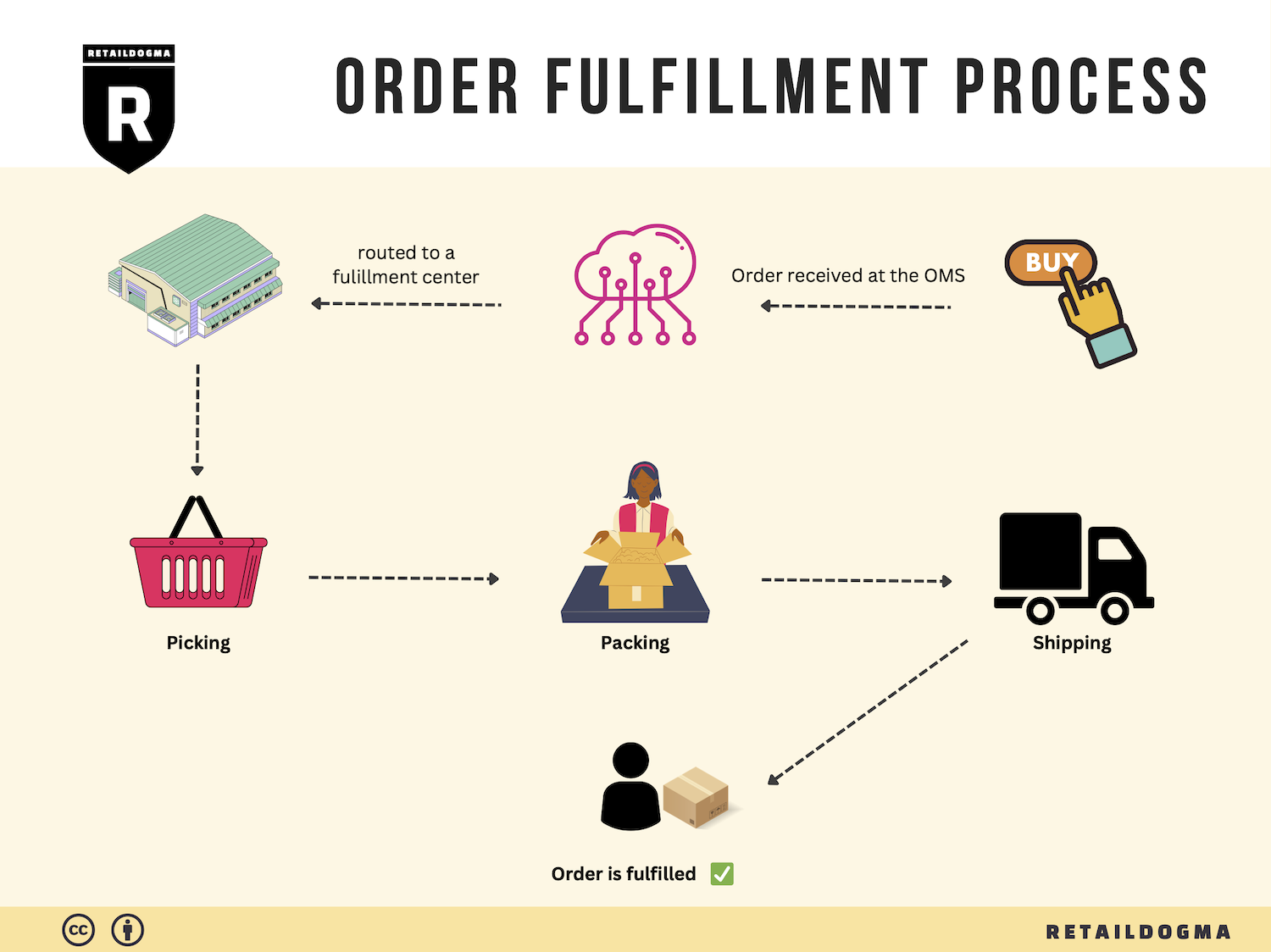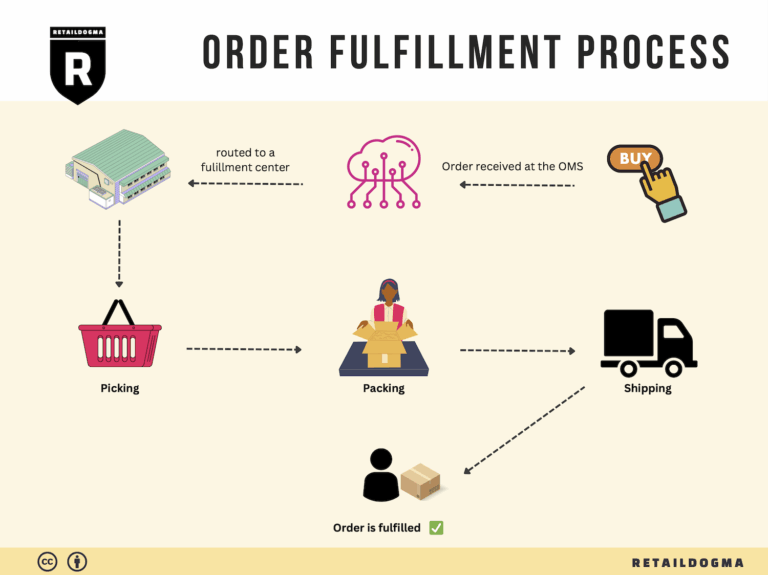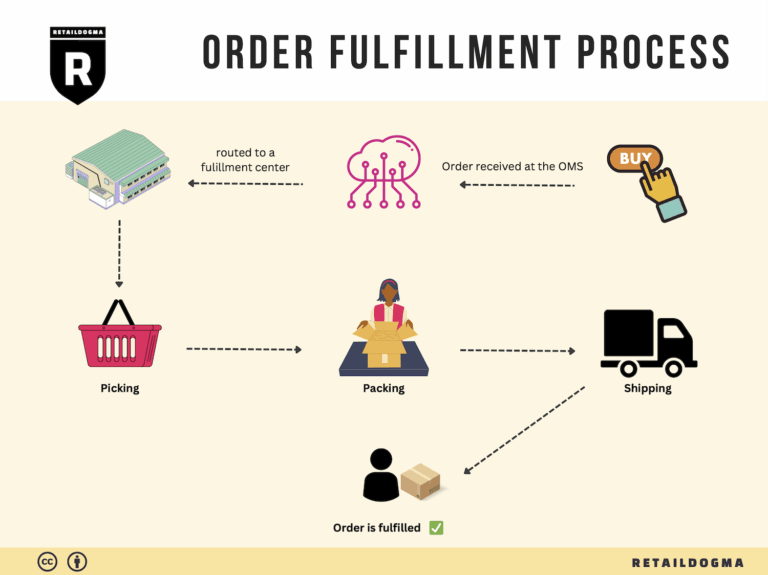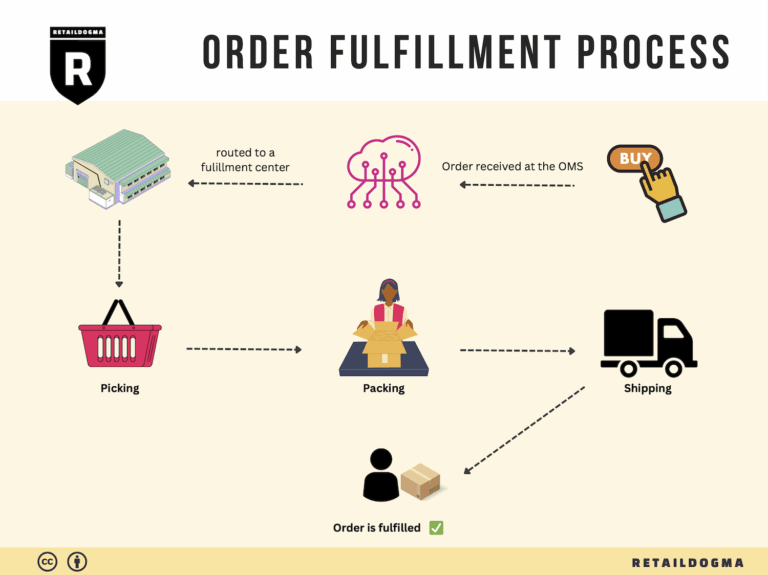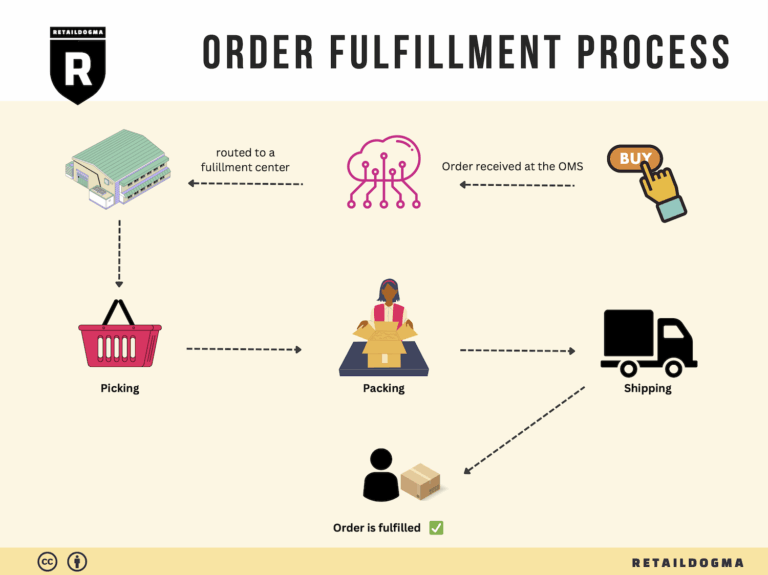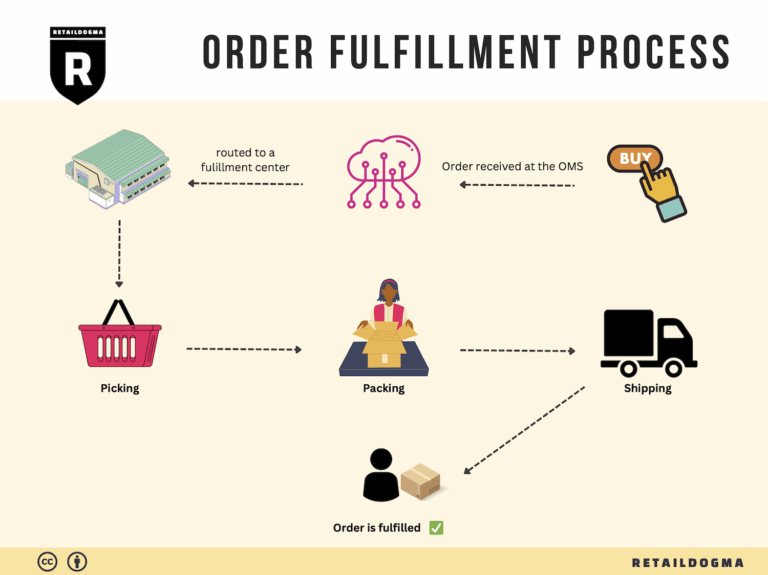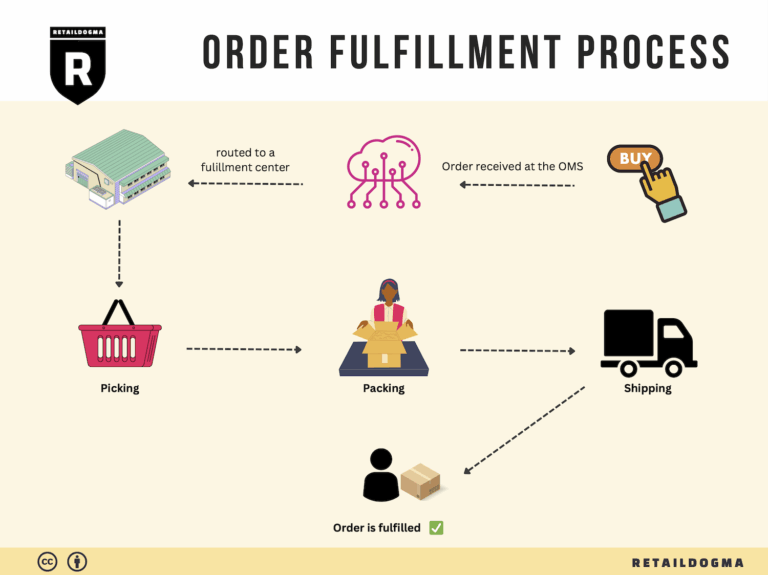How Order Fulfillment Works: A Step-by-Step Guide for Businesses
What is E-commerce Fulfillment? An Introduction for Growing Businesses
Understanding the Challenges of E-commerce Fulfillment
As an e-commerce business owner or operations manager, you know the excitement of growing sales and expanding your customer base. However, this growth often comes with the overwhelming responsibility of packing and shipping orders. The logistics of getting products into the hands of customers can quickly become a daunting task, diverting your focus from scaling your business to managing logistics. This is where e-commerce fulfillment steps in.
E-commerce fulfillment is fundamentally the process of getting a product from your inventory to your customer’s doorstep. It encompasses everything from receiving orders and picking items to packing and shipping them. For growing businesses, mastering this process is crucial not only for operational efficiency but also for maintaining a positive customer experience.
What This Guide Covers
In this comprehensive guide, we will explore various fulfillment models, including Third-Party Logistics (3PL) and Fulfillment by Amazon (FBA). Each model has its unique advantages, and understanding these can help you choose the right approach for your business needs.
We’ll delve into core fulfillment services, such as inventory management, order processing, and returns handling. These services are essential for ensuring that your logistics operations run smoothly and can adapt to changing customer demands.
Choosing the right fulfillment partner can be a game-changer for your business. We will provide practical advice on what to look for in a partner, including their technology capabilities, service offerings, and pricing structures. Understanding these elements will empower you to select a partner that aligns with your growth ambitions.
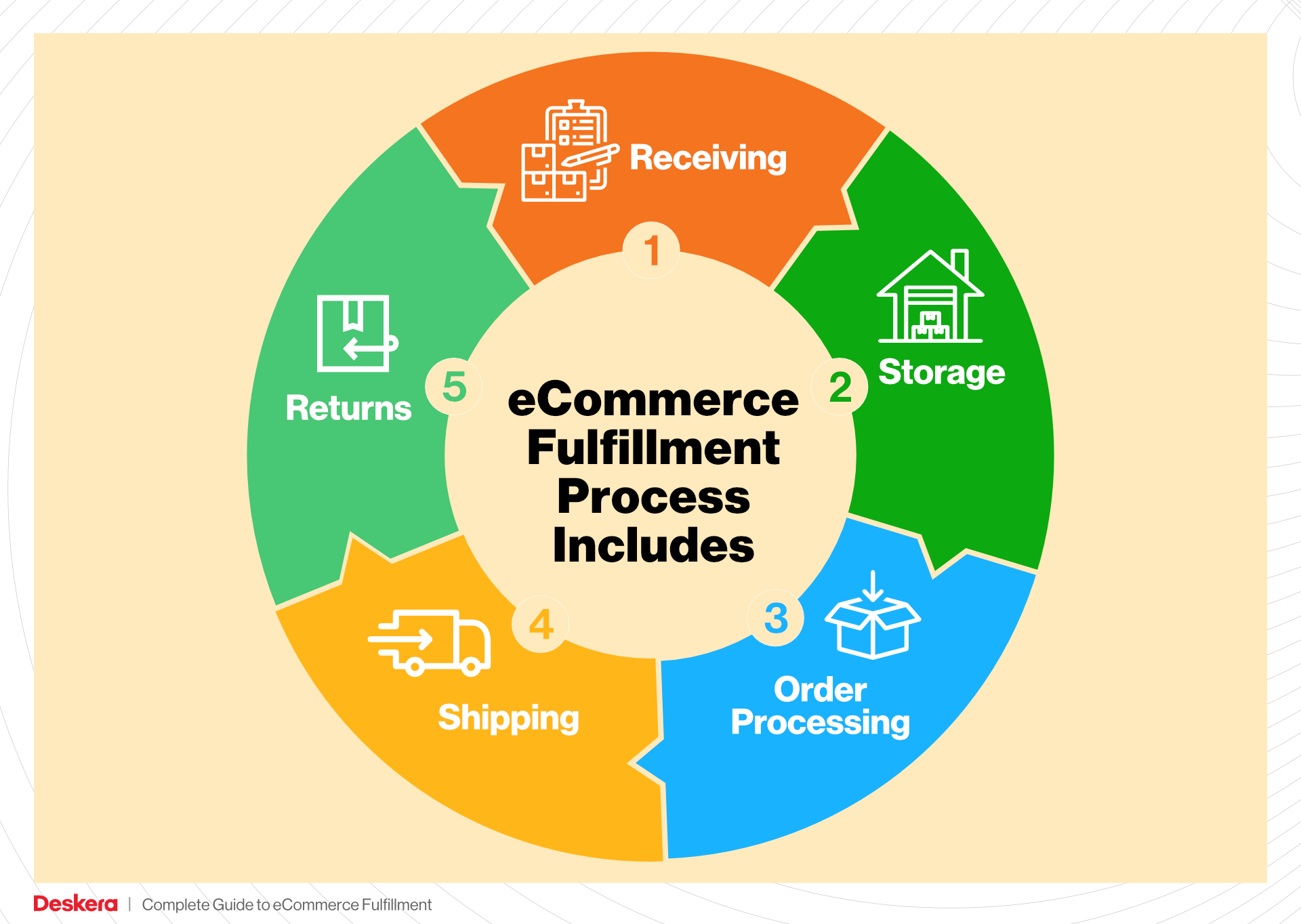
Finally, we will address the often complex issue of pricing. Fulfillment costs can vary significantly depending on the services you choose and the scale of your operations. We will break down the components of fulfillment pricing, helping you to forecast expenses and make informed financial decisions.
Empowering Your Logistics Decisions
The goal of this guide is to equip you with the knowledge and tools necessary to navigate the world of e-commerce fulfillment confidently. By understanding the different models, services, and pricing structures available, you will be empowered to make smart, strategic decisions about your logistics. Ultimately, mastering fulfillment can lead to enhanced customer satisfaction, increased sales, and a more scalable business model.
What You’ll Learn In This Guide
- What is E-commerce Fulfillment? An Introduction for Growing Businesses
- The Order Fulfillment Process: From ‘Buy’ Button to Customer’s Door
- Comparing Fulfillment Models: In-House vs. 3PL vs. Dropshipping
- A Deep Dive into Amazon FBA: Pros, Cons, and Who It’s For
- Core Services Offered by Fulfillment Centers
- How to Choose a Fulfillment Partner: A 6-Point Checklist
- Understanding Fulfillment Pricing: A Breakdown of Common Fees
- Frequently Asked Questions (FAQs) about Fulfillment
- Conclusion: Is Outsourcing Fulfillment the Right Move for Your Business?
- Important Disclaimer
The Order Fulfillment Process: From ‘Buy’ Button to Customer’s Door
1. Receiving Inventory
The order fulfillment process begins with receiving inventory at the fulfillment center. This step involves the careful inspection and documentation of incoming products to ensure they meet quality standards and match the purchase orders. Each item is assigned a Stock Keeping Unit (SKU), a unique identifier that helps track inventory levels and sales.
Importance: Proper receiving practices are crucial for maintaining accurate inventory counts and preventing stock discrepancies. If items are damaged or incorrect, it can lead to delays in order fulfillment and impact customer satisfaction. Efficient receiving processes also set the tone for the rest of the fulfillment journey, establishing a foundation for smooth operations.
2. Warehouse Storage
Once the inventory is received and processed, it is stored in designated warehouse locations. Strategic warehouse storage involves organizing products in a way that maximizes space and efficiency, often utilizing methods such as FIFO (First In, First Out) to manage inventory flow.
Importance: Effective warehouse storage is vital for quick access to products when orders are placed. Well-organized storage minimizes the time required for order picking and reduces the risk of errors. Additionally, utilizing advanced warehouse management systems (WMS) can enhance visibility and tracking of inventory across various locations, ensuring that stock levels are optimized.
3. Order Picking
When a customer places an order, the next step is order picking, where items are retrieved from their storage locations based on the order details. This process often utilizes pick lists, which are documents that outline the items and quantities to be collected.
Importance: Accurate and efficient order picking is critical to fulfilling customer expectations, especially in an era where fast shipping is the norm. Errors during this stage can lead to incorrect shipments, resulting in returns and dissatisfied customers. Implementing technologies such as barcode scanning can significantly enhance the accuracy and speed of the picking process, ensuring orders are fulfilled correctly.
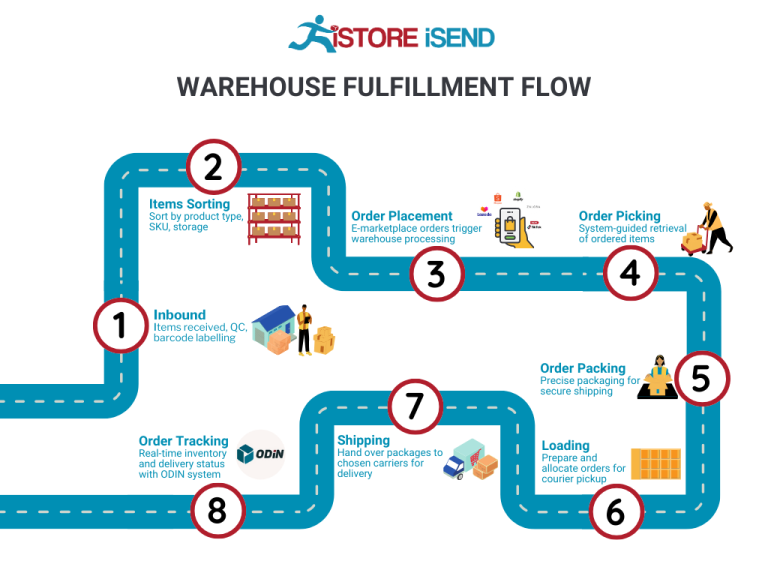
4. Order Packing
After items are picked, they are taken to the packing station where they are prepared for shipment. This step includes inspecting items, packing them securely in appropriate materials, and labeling packages with necessary shipping information.
Importance: Proper order packing is essential for protecting products during transit and ensuring they arrive in excellent condition. It also plays a role in branding, as well-packed items can enhance the customer experience. Automation tools can assist in this process, streamlining packing operations and reducing human error. Additionally, including packing slips or promotional materials can further engage customers.
5. Shipping & Delivery
The final step in the order fulfillment process is shipping and delivery. Once packages are packed, they are handed off to shipping carriers for delivery to the customer’s doorstep. This step involves selecting the best shipping options based on factors like cost, speed, and destination.
Importance: Efficient shipping and delivery are crucial for meeting customer expectations for quick and reliable service. Offering various shipping options, including expedited services, can enhance customer satisfaction and loyalty. Real-time tracking systems allow customers to monitor their shipments, improving transparency and trust. Additionally, optimizing shipping routes and leveraging partnerships with logistics providers can significantly reduce shipping costs and delivery times.
In conclusion, understanding and optimizing each step of the order fulfillment process—from receiving inventory to shipping and delivery—can dramatically enhance operational efficiency and customer satisfaction. By implementing best practices and leveraging technology, e-commerce businesses can create a seamless fulfillment experience that supports their growth ambitions.
Comparing Fulfillment Models: In-House vs. 3PL vs. Dropshipping
Fulfillment Model Comparison
| Model | Who Handles Inventory | Best For (Business Stage) | Key Advantage | Key Disadvantage |
|---|---|---|---|---|
| In-House Fulfillment | Business Owns Inventory | Startups to Medium-sized Businesses | Complete control over operations and branding | High overhead costs and labor-intensive |
| Third-Party Logistics (3PL) | 3PL Provider | Growing Businesses and Brands | Scalable, cost-effective logistics solutions | Less control over inventory management |
| Dropshipping | Supplier | New Entrepreneurs and Small Startups | Low upfront costs and no inventory risk | Lower profit margins and reliance on suppliers |
In-House Fulfillment
In-house fulfillment involves a business managing its own inventory, storage, and shipping processes. This model is often favored by startups and medium-sized businesses that wish to maintain complete control over their operations. The key advantage of in-house fulfillment is the ability to oversee every aspect of the logistics process, which allows for a customized approach to branding and customer service. Companies can ensure quality control, manage packaging, and adjust shipping strategies based on real-time data. However, this model comes with significant disadvantages, primarily the high overhead costs associated with maintaining warehousing, staffing, and technology. Additionally, in-house fulfillment can be labor-intensive, requiring dedicated resources for inventory management and order processing. This model is best suited for businesses that have the capital to invest in infrastructure and are looking for long-term control over their logistics operations.
Third-Party Logistics (3PL)
Third-party logistics providers (3PLs) offer a flexible alternative to in-house fulfillment by managing logistics, warehousing, and distribution on behalf of businesses. This model is ideal for growing brands that need to scale their operations without the burden of managing their own fulfillment centers. The key advantage of partnering with a 3PL is scalability; businesses can adjust their logistics needs as they grow, accessing a network of fulfillment centers that can handle varying order volumes. 3PLs often provide advanced technology solutions, such as inventory management systems and order tracking, which enhance operational efficiency and visibility. However, a notable disadvantage is the reduced control over inventory management and customer experience, as businesses must rely on their 3PL partner to uphold their brand standards. For businesses focused on growth and efficiency, a 3PL can be a strategic ally, allowing them to concentrate on core business activities while outsourcing logistics.
Dropshipping
Dropshipping is a fulfillment model where a business sells products without holding inventory. Instead, when a customer places an order, the retailer purchases the item from a third-party supplier who then ships it directly to the customer. This model is particularly appealing for new entrepreneurs and small startups due to its low upfront costs and minimal risk. The primary advantage of dropshipping is that it eliminates the need for inventory management and upfront investment in stock, making it accessible for those with limited resources. However, the model comes with its own set of challenges. Profit margins tend to be lower since retailers purchase products at wholesale prices, and they are heavily reliant on suppliers for product availability, quality, and shipping times. This lack of control can lead to customer dissatisfaction if issues arise with order fulfillment. Despite these challenges, dropshipping can serve as a viable entry point into e-commerce for those willing to navigate its complexities.
Conclusion
Choosing the right fulfillment model is crucial for e-commerce business owners, as it directly impacts operational efficiency, customer satisfaction, and overall profitability. In-house fulfillment offers control and customization, making it suitable for businesses ready to invest in infrastructure. In contrast, 3PLs provide scalability and flexibility, ideal for those looking to grow without the burden of logistics management. Finally, dropshipping offers a low-risk entry into e-commerce, perfect for new entrepreneurs, albeit with its challenges in profit margins and supplier reliance. Understanding these models and their implications will help businesses make informed decisions as they scale their sales and logistics.
A Deep Dive into Amazon FBA: Pros, Cons, and Who It’s For
Understanding Fulfillment by Amazon (FBA)
Fulfillment by Amazon (FBA) is a service offered by Amazon that allows sellers to store their products in Amazon’s fulfillment centers. Amazon takes care of storage, packaging, and shipping to customers, along with handling customer service and returns. This service is designed to simplify logistics for e-commerce businesses, enabling them to focus on growth while leveraging Amazon’s vast distribution network.
How FBA Works
-
Setup and Inventory Management: Sellers begin by creating an Amazon seller account and setting up FBA. They then prepare their products according to Amazon’s guidelines, which include labeling, packaging, and ensuring compliance with Amazon’s policies. Once prepared, sellers ship their inventory to Amazon’s fulfillment centers.
-
Storage: Amazon stores the products in its warehouses. Sellers can track their inventory levels through the Amazon Seller Central dashboard.
-
Order Processing: When a customer orders a product, Amazon picks, packs, and ships the item directly to the customer. This process is typically very quick, with many orders eligible for same-day or two-day delivery, thanks to Amazon Prime.
-
Customer Service and Returns: Amazon handles all customer inquiries and returns related to FBA products. This includes managing returns and refunds, which can be a significant operational burden for sellers.
-
Multi-Channel Fulfillment: Sellers can also use FBA to fulfill orders from other sales channels, such as their own website or other online marketplaces, allowing for streamlined logistics across multiple platforms.
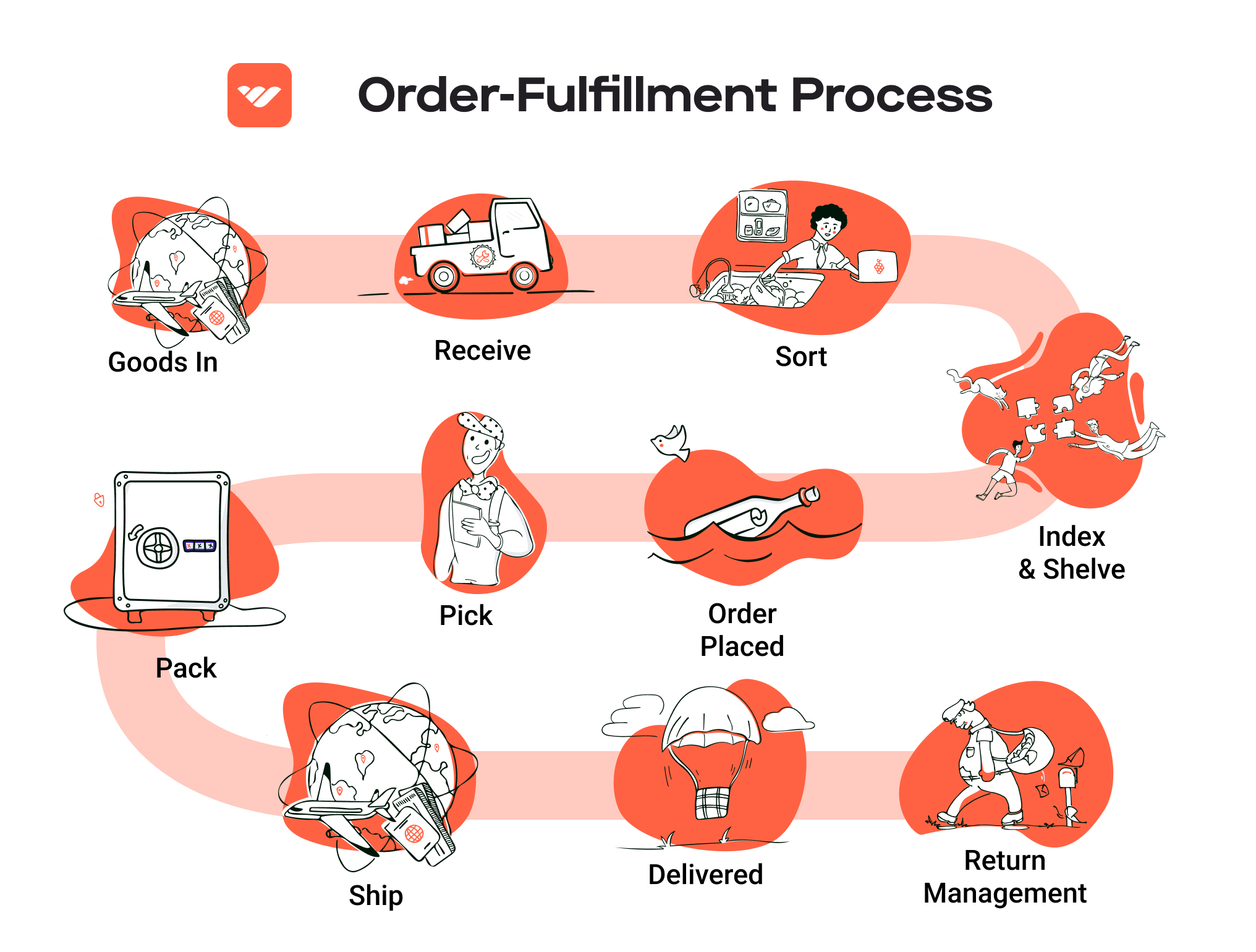
Pros of FBA
-
Prime Eligibility: Products fulfilled by Amazon are automatically eligible for Amazon Prime, which can significantly increase visibility and sales. Prime members often prefer purchasing items with Prime shipping due to the fast delivery options.
-
Customer Trust: With the backing of Amazon’s brand, customers often feel more confident purchasing products that are fulfilled by Amazon. This trust can translate into higher conversion rates for sellers.
-
Scalability: FBA allows businesses to scale without the need to invest heavily in warehousing or logistics infrastructure. Sellers can grow their inventory and customer base without worrying about the complexities of fulfillment.
-
Time Savings: Outsourcing logistics to Amazon frees up time for sellers to focus on marketing, product development, and other critical business areas. This can lead to improved business performance and growth.
-
Multi-Channel Fulfillment: FBA supports orders from multiple sales channels, not just Amazon. This flexibility allows businesses to centralize their logistics, making it easier to manage inventory and fulfill orders from various platforms.
Cons of FBA
-
High Fees: While FBA provides many advantages, the associated costs can be significant. Amazon charges storage fees for products stored in its warehouses and fulfillment fees for each order processed. These costs can add up quickly, especially for sellers with low margins.
-
Strict Inventory Rules: Amazon has stringent guidelines for inventory management, including limits on the number of units sellers can store. Non-compliance can result in penalties, including additional fees or suspension from the program.
-
Commingling Risks: FBA products may be commingled with those from other sellers, meaning that if a product is returned, it may not be the exact item the seller sent to Amazon. This can lead to issues with product quality and authenticity, especially for sellers of unique or branded items.
-
Limited Control Over Fulfillment: When using FBA, sellers relinquish control over how their products are stored and shipped. This can lead to inconsistencies in packaging and shipping times, which may affect customer experience.
-
Long-Term Storage Fees: Amazon imposes long-term storage fees on products that remain in its warehouses for over six months. This can incentivize sellers to frequently rotate inventory, which may not always align with their sales cycles.
Who is FBA Best For?
Fulfillment by Amazon is particularly beneficial for:
-
Small to Medium-Sized Businesses: Entrepreneurs and small businesses looking to scale their operations without the overhead of managing their own logistics can find FBA to be an invaluable resource.
-
Retailers with High Sales Volumes: Businesses that sell popular products with high turnover can benefit from the efficiency and speed that FBA offers.
-
Brands Seeking Prime Visibility: Companies that want to tap into the Prime member market and leverage Amazon’s brand trust will find FBA advantageous.
-
E-commerce Entrepreneurs Expanding to Multiple Channels: Sellers looking to streamline their logistics across various sales platforms can use FBA as a centralized fulfillment solution.
-
Startups Testing Product Viability: New businesses can use FBA to test product demand without significant upfront investment in logistics and warehousing.
In conclusion, while FBA offers a powerful solution for many e-commerce businesses, it is essential for sellers to carefully consider the associated costs and potential challenges. By understanding both the pros and cons, entrepreneurs can make informed decisions about whether FBA aligns with their business goals and operational strategies.
Core Services Offered by Fulfillment Centers
Inventory Management & Warehousing
Inventory management and warehousing are foundational services provided by fulfillment centers, integral to any e-commerce operation. This service encompasses the receiving, storage, and monitoring of products in a secure environment. Fulfillment centers utilize advanced technology, such as Warehouse Management Systems (WMS), to track inventory levels, manage stock movements, and automate reordering processes.
Benefits:
1. Real-Time Visibility: E-commerce businesses gain real-time insights into inventory levels, which aids in preventing stockouts or overstock situations. This visibility is crucial for effective planning and demand forecasting.
-
Optimized Storage Solutions: Fulfillment centers often employ strategic warehousing solutions, including climate-controlled environments for sensitive products. This ensures that inventory is stored under optimal conditions, reducing the risk of damage and spoilage.
-
Cost Efficiency: By outsourcing warehousing needs, businesses can reduce overhead costs associated with maintaining their own storage facilities. This includes savings on utilities, property taxes, and staffing.
-
Scalability: As e-commerce businesses grow, fulfillment centers provide scalable solutions. They can easily accommodate fluctuating inventory levels without the need for businesses to invest in additional warehousing space.
Pick and Pack Services
Pick and pack services are critical for ensuring that customer orders are fulfilled accurately and efficiently. This process involves selecting items from inventory (picking), packing them securely, and preparing them for shipment. Fulfillment centers typically utilize automated systems to streamline this process, minimizing human error and maximizing speed.
Benefits:
1. Speedy Order Fulfillment: Automated pick and pack systems allow for rapid processing of orders, often achieving same-day or next-day shipping. This is essential for meeting customer expectations, especially in an era where fast delivery is a competitive advantage.
-
Accuracy and Quality Control: Fulfillment centers implement quality control measures during the pick and pack process to ensure that the correct items are sent to customers. This reduces return rates and enhances customer satisfaction.
-
Custom Packaging Options: Many fulfillment centers offer custom packaging solutions that can enhance the unboxing experience for customers. Branded packaging not only elevates the product presentation but also contributes to brand recognition.
-
Integration with E-commerce Platforms: These services seamlessly integrate with various e-commerce platforms, allowing businesses to automate order processing and keep inventory levels synchronized across multiple sales channels.
Kitting and Assembly
Kitting and assembly services involve grouping individual items together to create a single product or kit, which is then packaged and prepared for shipment. This service is particularly useful for businesses that sell bundled products or require assembly before shipping.
Benefits:
1. Enhanced Product Offerings: Kitting allows businesses to offer bundled products, which can increase average order value and attract customers looking for convenience. For example, a skincare company might bundle a cleanser, toner, and moisturizer together.
-
Streamlined Production Processes: By outsourcing kitting and assembly, businesses can focus on their core competencies, such as product development and marketing, rather than the logistical challenges of assembling products.
-
Reduction in Shipping Costs: Shipping bundled products can often be more cost-effective than shipping items individually. Fulfillment centers can optimize shipping by consolidating multiple items into a single package.
-
Customization Opportunities: Kitting services often allow for customization, enabling businesses to create unique offerings tailored to specific customer segments or seasonal promotions.
Returns Management (Reverse Logistics)
Returns management, or reverse logistics, is the process of handling product returns efficiently. Fulfillment centers play a crucial role in managing returns by inspecting, restocking, or disposing of returned items as necessary. Effective returns management is essential in maintaining customer satisfaction and brand loyalty.
Benefits:
1. Streamlined Returns Process: Fulfillment centers offer a systematic approach to managing returns, which can significantly reduce the time and resources spent on processing returns for e-commerce businesses.
-
Improved Customer Experience: A hassle-free returns process enhances customer satisfaction. Providing customers with easy return options can lead to increased trust and repeat business.
-
Data Insights for Inventory Management: Returns data can provide valuable insights into product performance and customer preferences. Understanding why items are returned can help businesses refine their offerings and reduce future return rates.
-
Cost Recovery: By efficiently handling returns, fulfillment centers can facilitate the restocking of items, allowing businesses to recover costs associated with unsold inventory. Some fulfillment centers also offer refurbishment services for returned goods, further enhancing recovery options.
In conclusion, partnering with a fulfillment center offers e-commerce businesses a comprehensive suite of services designed to streamline operations, reduce costs, and enhance customer satisfaction. By leveraging the expertise and technology of fulfillment centers, businesses can focus on scaling their operations while ensuring that logistics remain efficient and effective.
How to Choose a Fulfillment Partner: A 6-Point Checklist
Location & Warehouse Network
Importance:
The geographical location of your fulfillment partner’s warehouses directly impacts shipping times and costs. A partner with strategically placed warehouses can ensure quicker deliveries, which enhances customer satisfaction and reduces shipping expenses.
Questions to Ask:
– Where are your warehouses located? Are they positioned close to major customer demographics?
– How many fulfillment centers do you operate, and what is the average distance to key markets?
– Do you offer multi-location fulfillment options, and how does this affect shipping costs?
Technology & Integrations
Importance:
In today’s e-commerce landscape, technology plays a pivotal role in streamlining operations. A fulfillment partner with advanced technology can automate processes, improve inventory management, and provide real-time tracking, leading to increased efficiency.
Questions to Ask:
– What technology platforms do you use for order management and inventory tracking?
– Can your system integrate with my existing e-commerce platforms (e.g., Shopify, Amazon, WooCommerce)?
– Do you provide real-time visibility into inventory levels and order statuses? How is this information communicated?
Specializations (e.g., Cold Storage, Oversized Items)
Importance:
Different businesses have unique needs based on their products. If you sell perishable goods, oversized items, or specialized products, it’s crucial to partner with a fulfillment provider experienced in handling those specific requirements.
Questions to Ask:
– Do you offer specialized services such as cold storage or handling of hazardous materials?
– What procedures do you have in place for managing returns and exchanges for specialized products?
– Can you accommodate unique packaging requirements, such as kitting or bundling?
Scalability & Capacity
Importance:
As your business grows, your fulfillment needs will likely change. A partner that can scale alongside you will ensure that you don’t face bottlenecks as your order volume increases. Scalability also means having the capacity to handle seasonal spikes in demand without compromising service quality.
Questions to Ask:
– How do you handle seasonal fluctuations in order volume?
– What is your capacity for scaling operations? Can you easily add more warehouse space or resources when needed?
– Have you successfully scaled operations for other clients in the past? Can you provide examples?
Pricing and Contracts
Importance:
Understanding the pricing structure and contract terms is essential to avoid unexpected costs that can erode your margins. A transparent pricing model allows for better financial planning and budgeting.
Questions to Ask:
– What is your pricing model (e.g., per order, per item, monthly fee)? Are there additional costs for services such as storage, pick and pack, or returns processing?
– Do you offer locked-in rates for long-term contracts, and what are the terms for cancellation?
– Are there any hidden fees that I should be aware of, such as placement fees for FBA?
Customer Support & Reviews
Importance:
Effective customer support is vital for addressing issues promptly and maintaining smooth operations. Additionally, reviews from other businesses can provide insights into the partner’s reliability and service quality.
Questions to Ask:
– What levels of customer support do you offer (e.g., 24/7 support, dedicated account manager)?
– Can you provide references or case studies from businesses similar to mine?
– What is your average response time for customer inquiries or issues?
Conclusion
Selecting the right fulfillment partner is a critical decision that can significantly impact your e-commerce business’s efficiency and growth. By carefully evaluating potential partners against this checklist, you can make an informed choice that aligns with your operational needs and strategic goals. Remember, a successful partnership is built on transparency, reliability, and the ability to adapt to your evolving business landscape.
Understanding Fulfillment Pricing: A Breakdown of Common Fees
Initial Setup Fees
When partnering with a fulfillment center, the initial setup fees are typically the first costs you will encounter. These fees cover the administrative work required to onboard your business into the fulfillment center’s system. This may include creating your account, integrating your inventory management systems, and setting up any necessary technology connections.
These fees can vary widely depending on the complexity of your business needs, the number of SKUs you have, and the specific services you require. Some fulfillment centers may offer a flat fee for setup, while others may charge based on the time and resources invested. It is crucial to clarify what is included in these fees, as some centers may bundle additional services, such as training or account management, into their initial costs.
Receiving Fees
Receiving fees are incurred when your inventory arrives at the fulfillment center. This fee covers the labor and resources required to unload, inspect, and store your products. Receiving fees can be calculated on a per-unit basis, per shipment, or based on the total weight of the shipment.
For example, a fulfillment center might charge $0.50 per unit for receiving, or they may have a minimum fee for smaller shipments. Be sure to inquire about the specifics of how receiving fees are calculated, as this will impact your overall logistics costs, especially if you frequently ship large volumes.
Storage Fees (per pallet/bin)
Storage fees are charged for keeping your inventory in the fulfillment center’s warehouse. These fees can be assessed on a monthly basis and are typically calculated per pallet or per bin.
For instance, a fulfillment center might charge $20 per pallet per month or $5 per bin per month. The rate often depends on the size and type of products you are storing. Seasonal fluctuations can also affect storage costs; during peak seasons, you may face higher fees due to increased demand for space. Understanding your storage needs and how they align with the fulfillment center’s pricing structure is essential for managing costs effectively.
Pick & Pack Fees (per item/order)
Pick and pack fees cover the labor involved in selecting items from inventory and preparing them for shipment. This fee is usually calculated per item or per order. For example, a fulfillment center may charge $1.00 per item for picking and $1.50 per order for packing.
The complexity of your products can influence these fees; for instance, items that require special handling or packing materials may incur additional charges. It’s vital to consider how often you will be shipping orders and the average number of items per order when evaluating this cost, as it can quickly add up and affect your profit margins.
Shipping Fees
Shipping fees are one of the most significant costs associated with fulfillment services, as they encompass the transportation of your products to customers. These fees can vary based on several factors, including the shipping method (standard, expedited, etc.), the destination, and the weight and dimensions of the package.
Fulfillment centers often negotiate rates with shipping carriers, which can lead to competitive pricing for their clients. It’s essential to understand how shipping fees are calculated—whether they are based on weight, dimensions, or a flat rate—and to inquire about any additional surcharges that may apply, such as fuel surcharges or residential delivery fees.
Tips for Getting an Accurate Quote
To ensure you receive an accurate quote from a fulfillment center, consider the following tips:
-
Be Transparent: Provide detailed information about your products, including dimensions, weights, and any special handling requirements. This helps the fulfillment center provide a more precise estimate.
-
Understand Your Needs: Clearly outline your expected order volume, shipping frequency, and any seasonal fluctuations in demand. This information will help the fulfillment center tailor their services to your specific requirements.
-
Request Itemized Quotes: Ask for a breakdown of all fees, including setup, receiving, storage, pick and pack, and shipping. An itemized quote will help you understand where your money is going and make it easier to compare different providers.
-
Negotiate Terms: Don’t hesitate to negotiate terms and fees, especially if you plan to scale your business. Many fulfillment centers are willing to offer discounts or flexible terms for long-term partnerships.
-
Review Contracts Carefully: Before signing any agreements, review the terms and conditions carefully to ensure there are no hidden fees or unfavorable terms that could affect your bottom line.
By understanding these common fees and asking the right questions, you can make informed decisions that will help you scale your e-commerce business effectively while managing costs.
Frequently Asked Questions (FAQs) about Fulfillment
1. What is an Amazon Fulfillment Center?
An Amazon Fulfillment Center is a specialized warehouse facility operated by Amazon that stores and ships products directly to customers. These centers handle the entire order fulfillment process, including inventory storage, picking, packing, and shipping, ensuring quick delivery times, often within one to two days.
2. How does an Amazon Fulfillment Center in Texas operate?
Fulfillment Centers in Texas operate under the same principles as those in other locations. They receive products from sellers, manage inventory, and process orders. With Texas’s strategic location, these centers facilitate faster shipping across the central and southern United States, benefiting sellers who use the Fulfillment by Amazon (FBA) service.
3. What are the benefits of using an Amazon Fulfillment Center in Texas?
Using a Texas-based Fulfillment Center provides several advantages, including reduced shipping times to customers in nearby states, access to a large labor pool, and potential cost savings on transportation due to the state’s central location. Additionally, sellers can take advantage of Amazon’s logistics and customer service capabilities.
4. What’s the difference between a warehouse and a fulfillment center?
A warehouse primarily focuses on storing goods, while a fulfillment center is designed for order processing and shipping. Fulfillment centers handle the picking, packing, and shipping of products directly to customers, often incorporating technology to streamline these processes. In contrast, warehouses may not offer these additional services.
5. What is a 3PL (Third-Party Logistics) provider?
A 3PL provider is a company that offers outsourced logistics services, including warehousing, fulfillment, and distribution. They manage the supply chain for businesses, allowing sellers to focus on their core operations while leveraging the 3PL’s expertise and resources for inventory management and shipping.
6. How much do fulfillment services cost?
Fulfillment service costs vary based on several factors, including the volume of orders, the size and weight of products, storage needs, and additional services like kitting or labeling. Generally, costs are broken down into storage fees (per cubic foot) and fulfillment fees (per order or item). It’s essential for businesses to request quotes and compare services to find the best fit for their needs.
7. How does Amazon FBA work with fulfillment centers?
Amazon FBA (Fulfillment by Amazon) allows sellers to store their products in Amazon’s fulfillment centers. When a customer places an order, Amazon handles the picking, packing, shipping, and customer service. Sellers benefit from Amazon’s Prime eligibility and extensive logistics network, which can significantly enhance their reach and sales.
8. Can I use my own shipping carrier instead of Amazon’s?
When using Amazon FBA, sellers must utilize Amazon’s shipping options to maintain eligibility for Prime and other services. However, if you are using a different fulfillment center or a 3PL, you may have the flexibility to choose your preferred shipping carriers based on your business needs and cost considerations.
9. What types of products can be stored in an Amazon Fulfillment Center?
Amazon Fulfillment Centers can store a wide range of products, including consumer goods, electronics, clothing, and more. However, there are restrictions on hazardous materials, perishable items, and certain regulated products. Sellers should review Amazon’s policies to ensure compliance with storage and shipping guidelines.
10. How can I optimize my inventory management in a fulfillment center?
To optimize inventory management in a fulfillment center, businesses should utilize real-time data analytics to track stock levels, sales trends, and reorder points. Implementing an inventory management system that integrates with the fulfillment center can help streamline processes, reduce excess inventory, and ensure that popular products are always in stock. Regular audits and forecasting can further enhance inventory efficiency.
Conclusion: Is Outsourcing Fulfillment the Right Move for Your Business?
Key Benefits of Outsourcing Fulfillment
As e-commerce continues to evolve, outsourcing fulfillment has emerged as a strategic move for businesses aiming to scale efficiently. Engaging a fulfillment service can offer several advantages that are essential for growth:
-
Time Savings: By outsourcing logistics, business owners can free up valuable time that can be redirected towards core activities such as marketing, product development, and customer engagement. Fulfillment partners handle everything from inventory management to shipping, allowing you to focus on scaling your brand rather than being bogged down by operational details.
-
Scalability: A reliable fulfillment partner can adapt to your changing needs, whether you’re experiencing seasonal spikes or expanding into new markets. Their infrastructure is designed to accommodate growth, enabling you to scale operations without the heavy lifting associated with managing logistics in-house.
-
Expertise and Technology: Fulfillment centers, like those operated by AMZ Prep, are equipped with advanced technology and staffed by logistics specialists who understand the nuances of e-commerce fulfillment. Their expertise in inventory management, compliance, and shipping optimization can significantly enhance your operational efficiency and customer satisfaction.
Choosing the Right Partner for Growth
Selecting the right fulfillment partner is critical to your business’s success. Not all providers offer the same level of service or expertise, so it’s essential to conduct thorough research and consider factors such as their technology, geographic reach, and reputation in the industry. A strong partner will not only meet your current needs but also support your long-term growth strategy.
Call to Action
To determine if outsourcing fulfillment is the right next step for your business, take a moment to audit your current shipping processes. Assess your operational bottlenecks, costs, and customer satisfaction levels. This evaluation will provide valuable insights into whether a fulfillment partner can enhance your efficiency and help you achieve your growth objectives. Embrace the opportunity to transform your logistics into a competitive advantage—because when your fulfillment is seamless, your business can soar.
Important Disclaimer
⚠️ Important Disclaimer
The information in this guide is for educational purposes. Fulfillment services, pricing, and platform features change frequently. Always conduct your own due diligence and consult with providers directly before making business decisions.
